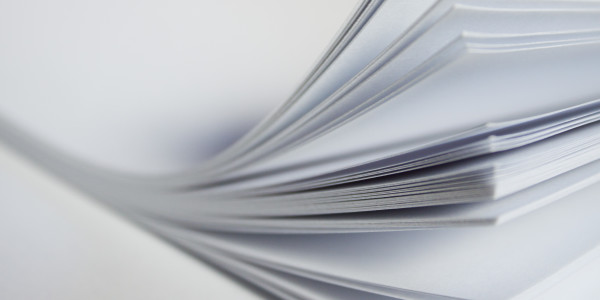We like to keep up with the new things in technology.
Paper is about as cutting edge as a butter knife. A lot of people would say that paper’s usefulness as a thing of the past. Many of the things that we once relied on paper for have made the move to digital. Whether it’s the home, the office, or the classroom, paper has been shouldered out by digital media. Books can be downloaded and read on mobile devices, letters are written electronically and sent as emails, and notes are taken on laptops rather than legal pads.
There’s no question that paper no longer pulls the same weight as it once did, but that doesn’t mean the paper industry is going to take it lying down. According to an article in The Washington Post, the paper industry is looking to inspire people to use more paper . The article quotes executive director of the Paper and Packaging board Mary Anne Hansan saying, “What we really want to do is reaffirm the desire to use paper.”
How will the paper industry spark this desire? Through a series of heart tugging commercials, of course!
But this campaign isn’t looking to up paper usage by simply churning out a few touching commercials. Studies about how handwriting helps learning, and education about recycling and sustainable forestry are on the docket as well.
The world is becoming increasingly digital. There’s no chance that we will revert back to snail mail from email, and that’s not the paper industry’s intention. They’re simply trying to reach those who prefer to write on paper and read books on print and encourage them to buy paper products rather than settle for digital.
However you do have to consider the environmental impact of paper use. According to the EPA, the United States uses nearly 70 million pounds of paper and paperboard each year. A lot of the paper in circulation today is made from recycled paper, but wood fiber is still commonly used in paper production.
The numbers on how much paper a tree yields vary greatly. Depending on who you ask, it can take anywhere between 8 and 24 trees to make one ton of paper.
And even though we’re using less paper and recycling more, about 40% of the waste stream is still paper.
When you compare the environmental cost of paper to the environmental cost of digital media, digital seems like the clear choice.
If you use Indramat motion control, you may not realize how much engineers back in the day relied on paper, but you might still value a manual. We’ll email it to you, of course.



